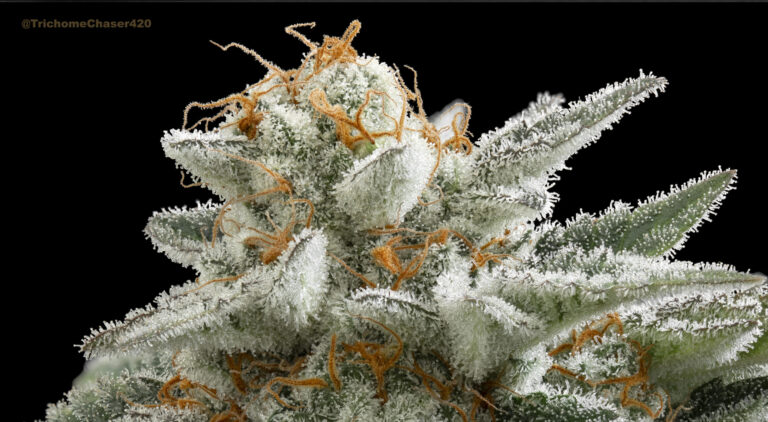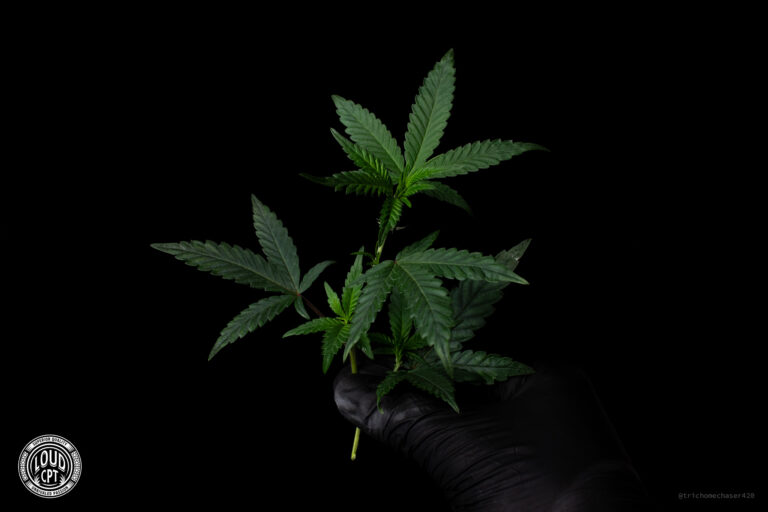10 Tips For Buying Cannabis Seeds
While there’s never been a better time to buy seeds in South Africa, with a number of local retailers and wholesalers in the space, there’s also never been a more confusing time to buy seeds. The number of breeders, both locally and internationally, feels more prominent than ever, and all of them want you to pop their beans. So how can you make sure your investment is a sound one and that you’re not just the victim of a successful marketing campaign?
If we know anything here at LOUDcpt, it’s the importance of good genetics and how to find breeders that can be trusted. In turn, we wanted to help you with a few suggestions that may help you make a more educated cannabis seed purchase and be happy with your results. The truth is, most growers end up getting bottlenecked by the genetics they are running but end up thinking that it’s their growing that’s the problem, and if they just push out a 5% increase in growing performance, everything will change. In reality, they are completely shocked after they run their first pack of premium beans and find out exactly what was holding them back from achieving the plants they’ve been hoping for.
But before we proceed, let it be noted that every grow journey is unique to you – and you should never feel as though you should be growing anything you don’t want to.
1. Know Your Breeders
You wouldn’t rush to buy a product based solely on the images you see of it online. Similarly, you shouldn’t be basing your seed purchases off a couple of images you see online. Understanding the breeder and how they create and test their seeds is no different from the faith we place in electronics manufacturers who are renowned for creating quality products. Visit some of the old-school forums like ICMAG, for example, to get a lot of first-hand growing information on the strains you’re growing, as well as images. Listening to trusted podcasts like Breeder’s Syndicate will also be able to provide you with some very deep dives into breeder’s work.
2. Focus on Lineage, Not Strain Name
Newer growers will often assume that all seeds with the same name are similar/the same. That Blue Dream, for instance, is Blue Dream. In an ideal world, that would be true, and breeders would have come up with their own unique names to market their strains. But hype sells, and for many breeders, it just makes business sense to them to adopt the name of something completely different and already established. Sometimes you’ll even see breeders lying about the lineage and not just the strain. This is why #1 is so useful, being able to tell who is trustworthy and reliable will help greatly here too.
3. Have a Goal in Mind
Don’t grab some seeds just cause you saw a good price and a fancy name. Think about what you’re looking for in your growing. Are you hunting for extract-oriented plants with lots of trichome production? Or is yield most important to you? Knowing how that particular lineage expresses itself will let you buy seeds that work best for your desires. Are short flowering times important to you? Consider that as a guiding point when purchasing.
Similarly, you want to make sure that the seeds you buy align with the type of growing you’re going to be doing. If you’re an outdoor grower or suffer from limited airflow in your setups, mold-resistant strains are going to be preferable. The same considerations should be made around all areas of your growing style. If your plants sit next to a neighbor’s wall, you may want to stay away from terpene profiles that are, for lack of a better word, ‘dank.’
4. Set a Realistic Budget
A common question is, “how much should I expect to spend on seeds?”. This depends on what you’re looking to get out of your grows. If you’re growing solely to have a head stash, you can get away with spending just a few hundred rands. On the other hand, if you’re looking to move toward production, breeding, or just looking to get the most out of your grows, you will need to spend a fair bit more. That’s not to say you need to spend R5000 on a pack of seeds, as most seeds over R4000 are marked solely for their brand-ability. You can get a lot of high-quality genetics between R1500 and R3000 a pack.
Just don’t be mistaken into thinking that a higher price equates to a higher quality product, breeders like CSI: Humboldt produces premium genetics using verified clone-only elites at around R2000 a pack. There’s nothing wrong with spending more on beans, but just be aware that this often relates more to the packaging or hype of the brand.
5. Photoperiod or Autoflower?
This is an important question to answer. Are you looking for seeds that will flower out in any light cycle, or are you looking for a single-season outdoor harvest or require a 12/12 lighting cycle indoors? Photoperiod plants have the benefit of being able to be cloned and mothers held. This ensures you can keep around a specific genotype of a plant and rerun it. They also tend to provide better representations of elite cuts since they can be made into S1s or crossed with similar varieties. You also get to determine the size and subsequent yield for the plants that you’re running. The downsides to photoperiods are that they will typically take longer before they are ready to flower
Autoflowers have the benefit of being fast flowering and also being able to flower under any light cycle. They also tend to be smaller plants thanks to the Ruderalis genetics. This means you can stick autoflowers outside in the middle of summer and still have them go into flower. However, this can also be their downside. Because they can’t be kept in veg due to their automatic flowering, it’s not realistic to keep mothers of autoflowers, so if you find a great cut, you’re probably only going to be able to run it that once. Additionally, some autoflowers go into flower very early, and if your environment isn’t ideal, you can end up with much lower yields.
This is a topic we’ll dive more deeply into in the future.
6. Feminized or Regular?
Chances are, you may be well aware of what feminized and regular seeds are and how they differ. But if you don’t, the short of it is that feminized seeds produce only female plants. This is due to the seeds being created by two female genotypes, one that is reversed to produce male pollen. This is great if you work with limited space and would be killing male plants. Regular seeds have been bred traditionally with a male and female plant, and these seeds can produce males, which is going to be useful for aspiring breeders, but less so for production growers or those working with limited space.
7. Find Your Flavours & Effects
You need to know what you’re into before you buy it. If you go buy groceries, you select foods that match your tastes. Cannabis should be similar. By knowing what effects and flavours you prefer, you’ll be able to find the strains that will get closest to those. I’m a big fan of the lemon gas profile found with a lot of OG cuts, for instance, so I find myself digging into that gene pool quite regularly when popping beans. On the other hand, you could have flavours you just don’t find pleasant (the garlic terps aren’t for everyone), so getting a gauge of how the strain you’re looking at expresses is very useful.
The biggest challenge here is knowing whether or not what you smoked and enjoyed was a good representation of what it claimed to be. But if you’re certain that the genetics are reliable and accurate to the claimed strain, you can easily start to piece together what types of plants you should be growing if you’re growing for yourself. If you’re growing for production, that’s a bit different, and you may start to focus more on bag appeal (trichome production and colouration) and yield.
8. Learn Who Has The Real Thing
We touched briefly on this earlier, but learning about breeders and managing to navigate the marketing to find the truth is really important for anyone looking to understand the difference between a 20 Rand seed and a 300 Rand seed. It will ultimately lead you to understand which breeders have claimed to have cuts they don’t and also, in turn, those who have verified cuts. Chem D is a good example of this. Chem D was claimed by a lot of growers and breeders in America and even Europe, but in almost all cases, the Chem D that was being shared around wasn’t the real thing.
This happens a lot, and unfortunately, it’s the grower that suffers at the end of the day because he saw “Chem D” written on a pack and assumed it’s got to be the real deal. In some cases, these elite cuts don’t leave small circles of friends – but the name still gets claimed by those looking to make a quick buck.
To put it in local terms, some breeders are out here selling Jerky as Biltong.
9. Be Skeptic about Hype Marketing
Firstly, there are definitely breeders out there with a bit of a marketing budget doing good work, but there are also countless companies looking to let the marketing do the talking and charge exorbitant prices for their untested poly-hybrid pollen-chucking. Some of these breeders still offer some good seeds, but you will notice, in many cases, the prices that are being asked are not any better than what’s out there at half the price.
I have dealt with a number of customers in the past who wanted a specific strain because they saw it listed on a Top 10 article on Google. Many of these lists are generated by sober writers sitting in an office looking to run through an article so they can clock out early. That’s to say, people are heavily influenced by how an article, video, or social media post portrays a strain.
It’s always a safe bet that if a new breeder is on the scene, to wait until you see enough grows and reports provided online to create some consensus as to the quality of the breeder. This is kind of like buying a game. If you ‘pre-order,’ there is a far greater chance of dissatisfaction.
10. Flowering Times
These days, this is less impactful than a decade ago when there were more thin-leafed, ‘Sativa’ varieties on the market. Nowadays, most strains will typically run between 8 and 11 weeks. Even then, if you’re looking to run a perpetual grow, a 3-week difference in each run can make a big difference in your overall annual turnaround or even become frustrating for growers who are working with limited space and can only veg for limited periods. Flowering times are also typically a bit longer than what breeder’s specify and each seed in a pack could have wildly varying flower times. Think about if you cross a 16-week Sativa landrace with a sub-60-day broad leaf Indica. The progeny from an F1 pop will express some plants with 16-week flowering times, others with under 60 days, and some in between.
Bonus Tip – Take Strain Databases With a Pinch of Salt
Finally, do yourself a favour and take strain database websites with a grain of salt. Websites that claim to have the details of almost every strain out there (those like Leafly for example) are not very good sources of information. In many cases, this data is crowd-sourced, most of the time from those who simply echo what their pack of seeds has told them. Some other sites don’t even crowdsource and instead hire underpaid data capturers who copy and paste unverified information from other sources and capture it as fact.
Think of it this way… There are 50 different breeders out there claiming to sell Wedding Cake and most of them have used completely different parents in their crosses. The likelihood that the pack you’re popping is the same as the one being talked about is slim to none in most cases. Instead, focus on reviews for the exact breeder and strain that you’re looking to plant.
We could talk forever about seeds, and if you have any questions about our seed varieties or just have questions about seeds in general, please feel free to reach out to us.







